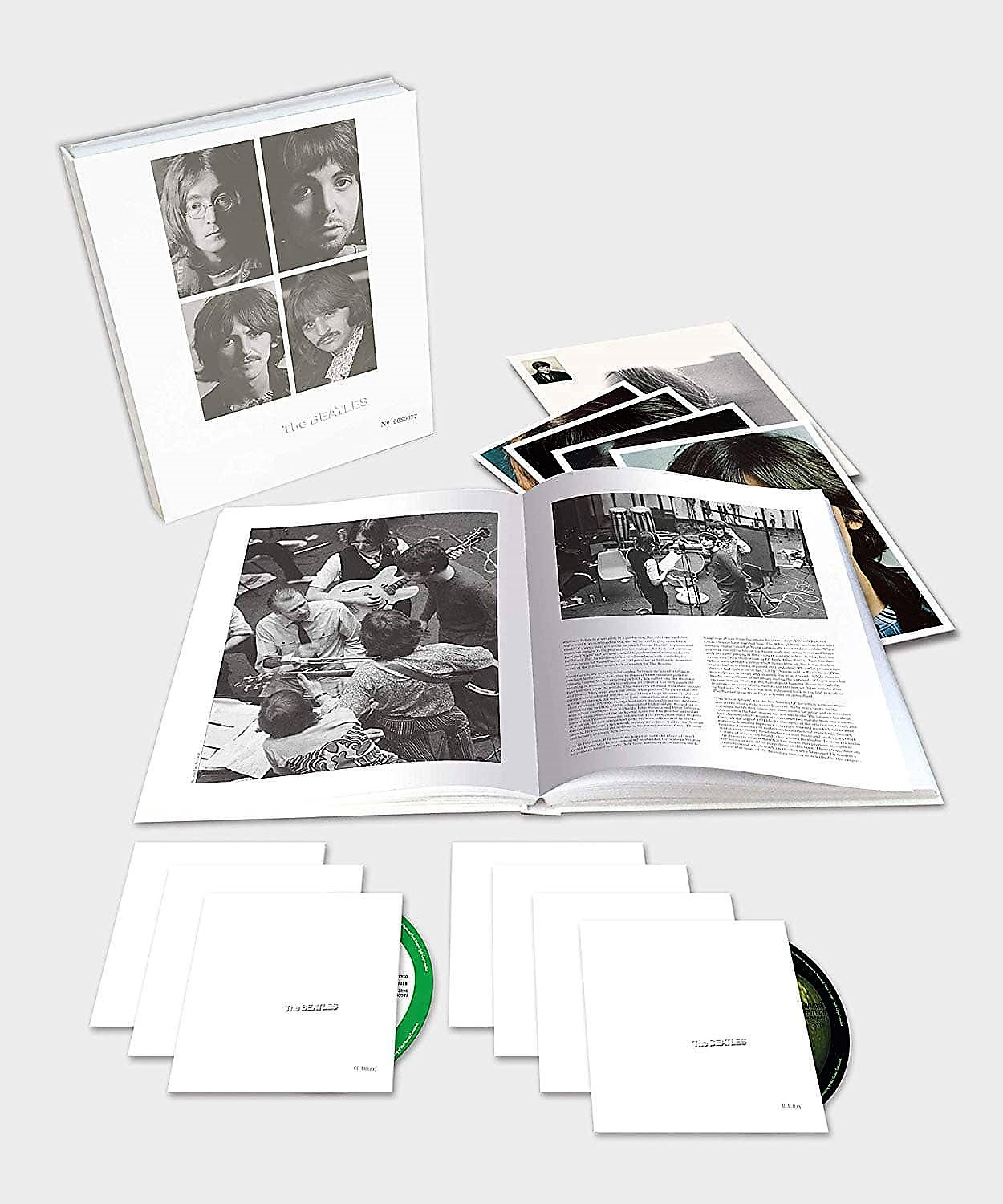Popular Reads
Top Results
Can't find what you're looking for?
View all search resultsPopular Reads
Top Results
Can't find what you're looking for?
View all search resultsThe Beatles White Album reissue: Symbolic end to the Fab Four
The Beatles' White Album remains as fascinating today as the day it was first released.
Change text size
Gift Premium Articles
to Anyone
T
he so-called White Album has often been thought of as symbolic of the end of The Beatles, but the newly released 50th anniversary edition shows a band still operating with audible joy and camaraderie.
With the demos of some songs reaching more than a hundred takes, there certainly also weren't any signs of contentment or artistic indolence. This was still a band that was eager to push the envelope of what popular music and the recording studio could be and could provide.
That the making of The Beatles (that's the actual album title; its popular nickname taken from the minimalist album artwork) was fraught with tension and infighting has been so widely reported that it has become a crucial part of the Beatles' lore – the beginning of the third act, when things start to fall apart and just before the redemptive arc (that would, perhaps, be the various solo albums?).
The story has overtaken the music when in fact The Beatles is still a towering achievement – where even the weaker tracks feel like a part of a whole.
Sure, no one (save for perhaps a daring, select few) would rank “Bungalow Bill” and “Honey Pie” as their favorite Beatles or even White Album songs; but on an album as monolithic as this, they provide a good dose of contrasting energy to recognized golden compositions like “Dear Prudence”, “Happiness Is A Warm Gun”, or “While My Guitar Gently Weeps”.
As with major reissues such as this, the most intriguing content is the rough demos and alternate takes of well-known songs. And just like last year's similarly dense Sgt. Pepper's Lonely Hearts Club Band reissue, this set is filled with a solid amount of goodies.
The Beatles essentially recorded everything; every moment where something is being played or sung (and sometimes, simply spoken about) gets on tape. With icons at the level McCartney, Lennon, Harrison and Starr, even regular chit-chat becomes an interesting listen, a fly-in-the-wall moment between a few of history's best-known pop culture figures.
There are moments just like that here, and hardcore fans would enjoy listening to McCartney pondering whether to sing “Blackbird” softer after one attempted take, or how a recording of “I Will” turns into a spontaneous Jazz-styled jam.
In line with the lore, there are indeed moments where a solo Beatle takes the helm while the rest tag along professionally. These stripped-down drafts are billed as the “Esher Demos” (named so as they were recorded at Harrison's residence in Esher) and arguably present the reissue's most arresting moments.
Recording mostly only one instrument alongside double-tracked vocals, these songs are more than enough proof that Lennon and McCartney were composers of overwhelming talent and that the fact of the two – alongside Harrison and Star to a lesser degree – coming together was a case of aligning stars that’s unlikely to repeat itself. (The Harrison compositions here, nascent versions of songs that would end up on his solo albums in the 70s and 80s, show a growing talent whose only fault was being in a band with Paul McCartney and John Lennon).
From the minimalist composition of “Back in the U.S.S.R” (rhythmic acoustic guitars and McCartney's voice only); the flanging beauty of Lennon's “Dear Prudence”; the intimacy of Lennon's “Julia” (written for and about his mother); to early versions of “Mean Mr. Mustard” and “Polythene Pam”, both of which would end up on Abbey Road, and Lennon's “Child of Nature”, which would mutate into “Jealous Guy”, one of his most popular solo compositions; this set showcases the unwavering sense of melody and dynamics that underlies every Beatles composition.
There are also more than 50 alternate working takes from the recording session itself, and again they offer a fascinating glimpse into these legendary sessions.
Though The Beatles is a more traditional affair, at least instrumentally, than Sgt. Pepper, these drafts show how much thought and arrangement tinkering went into the final versions of these songs. Check out the 13-minute-plus, even-more metallic version of “Helter Skelter” or 10-minute-plus version of “Revolution 1” to see how deep into self-editing The Beatles were.
The remixed version of the album is good, though it's clear that the original already presented the best balance of the songs. Nevertheless, it presents an alternate sonic landscape that is interesting to listen to.
A high point would be more prominence and clarity within most of the lead vocals and, to some degree, harmonies. There are also generally more obvious effects laid upon the instrumentations and overall mix, with tasty reverb that lends an edge but never overwhelmingly so.
This is a box set where even the drafts are wonderful, showing that no matter the compositional magic that The Beatles introduced to the world of music, it all goes back to the songwriting. The Beatles, in any form, are a must-listen to anyone considering themselves a fan of music.











